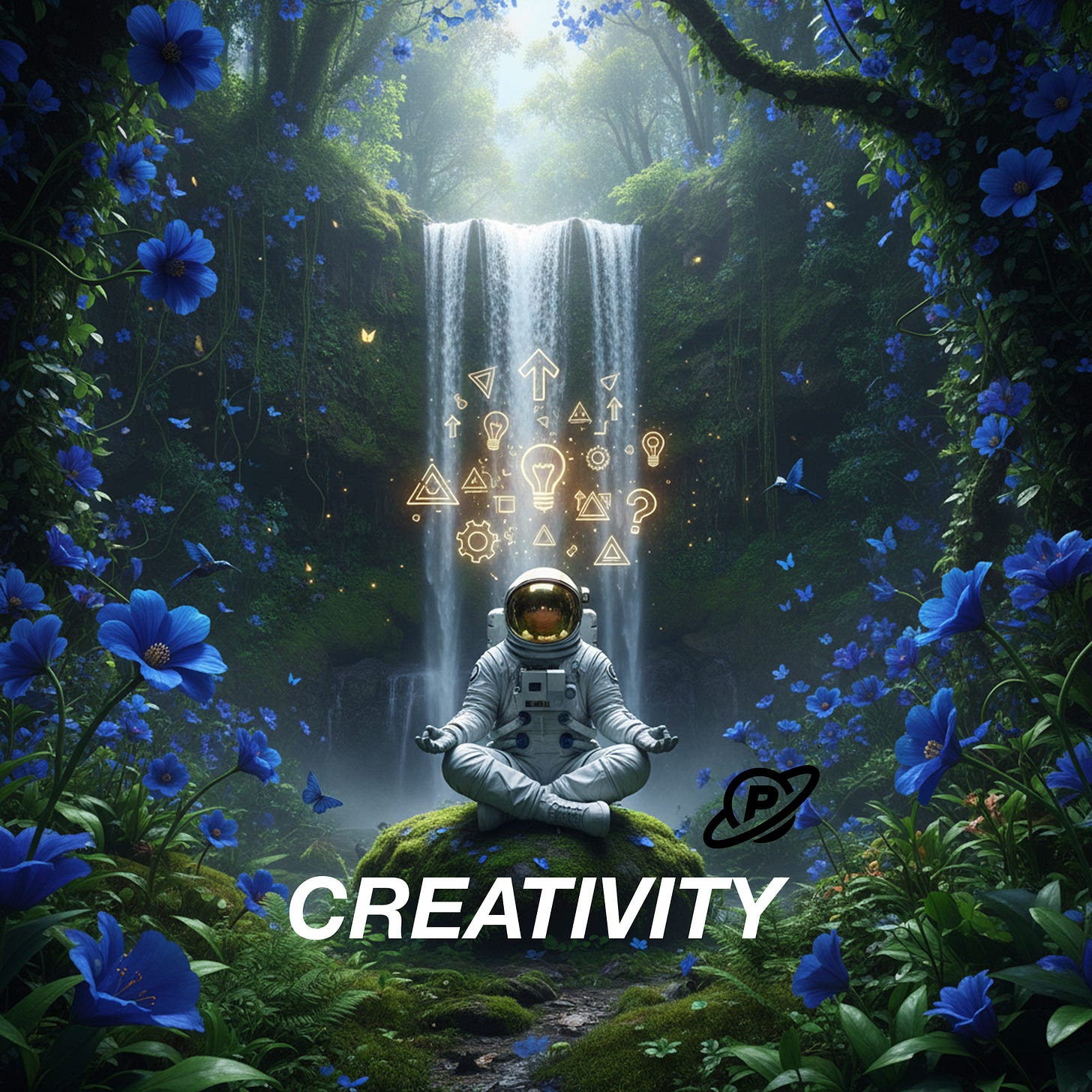Proven Tactics To Boost Creativity Without AI
How I learned to generate ideas on demand.
When I was working as a software engineer, managing people, or writing articles, the ability to generate new ideas and find new solutions to problems was vital.
It doesn't matter what you are working on, whether it's programming, marketing or managing — being creative helps everyone.
Creativity is a meta-skill that blends throughout all other skills and domains. There is no master’s degree for it, but I have gathered three proven tactics that have worked for me.
Box Yourself
"Thinking outside the box" is a popular term, but in reality, putting up boundaries helps us focus on solutions and ideas. Having infinite possibilities paralyses our thinking because we don’t know where to start.
What worked for me the best is to clearly define boundaries and generate ideas within these boundaries.
For example:
Please generate ideas on how to make people in the company happy — this is hard, so many possibilities, infinite domains, no scope.
Instead, think of this scenario:
Generate 10 ideas to make sure developers in the projects can exchange knowledge: they can use a 30-minute time slot every week, but there no additional budget for it.
Boxing helps us to focus on possible solutions when we know that we have limited resources to use.
For generating ideas in a group setting, I recommend going back to one of the most shared articles: "On Generating Ideas'
Turn Off Judgement
Putting boundaries helps direct our thinking in one area. But there is one more trick that makes us create more ideas, fast.
It's a limited time: Come up with 10 ideas in 5 minutes, Go! — It lowers the bar and slightly turns off overthinking about these propositions. We are focused on finding any ideas, not necessarily the best ones, just to finish on time.
Matthew Dicks, in his book "Storyworthy" (an excellent read about storytelling) proposed a great way of coming up with ideas for stories from his life. I use it often:
The technique is called Crash & Burn1:
Pick a piece of paper, or a new note in your favourite app
Start the timer for 10 minutes (might be less or more)
Write everything that you are thinking of, do not stop (put anything random that came up from your brain in the note, do not evaluate, do not judge anything)
When the time passes, review what you got
The handwritten version is slightly slower, which leads to different results than faster typing on the keyboard, different but not better or worse.
Why does it work? You need to keep writing so you are turning off any kind of judgment about what you are putting on paper. The more internal filters you are able to turn off, the more novel ideas can be created.
In "Storyworthy" this was the main source of new stories for the author. I use it for ideas about potential articles, but also to see where my mind is wandering.
Relax & Disconnect — Shower Thought
Relaxed and low-engaging activities like showering can activate the brain’s default mode network. It supports our minds to wander around, and as a side effect, be more creative.
Shower reduces distractions, warm water boosts dopamine and reduces stress, which can boost our creativity.
Don’t wait for inspiration.
Inspiration will never make the first move.
She comes only when you’ve shown you don’t need her.
— Derek Sivers, "How to Live"
I've experienced it many times, but it doesn't have to be showering. Try sitting in a quiet environment with eyes closed and disconnected from distraction, at least for a few minutes. It has similar effects. If you want to try a bit more extreme version of it, I can recommend a 10-day silent retreat.
This kind of setting, for me, produced interesting connections between my ideas and led to many improvements that I implemented right away.
Summary
For me, coming up with new ideas is one of the most rewarding activities. I enjoy wordplay and talk about made-up things (subjectively funny).
Creativity is a magic coin.
The more you spend, the more you have.
— Derek Sivers, "How to Live"
Creativity is like falling asleep. You can’t force yourself to do it. But you can create an environment that will help you achieve it.
How do you help your creativity?
Thanks for reading!
— Michał
Post Notes
Discover Weekly — Shoutouts
Articles that might help you explore new perspectives, which I’ve read recently:
The Knowledge-to-Action Blueprint (for learning addicts) by Gia Kori
A Humbling Experience, Lessons Learned, and Adventures in Self-Hosting by Sergio Visinoni
Connect
LinkedIn | Substack DM | Mentoring | X | Bsky
“The technique is called ‘Crash & Burn’ because ideas are meant to crash into each other and supersede previous thoughts — you don't get attached to any single idea, but let new ones crash into and burn away the old ones.”



Great quote of Derek Sivers. I like the idea of creating environment instead of forcing yourself into. Especially in engineering world is essential to keep your mind a bit creative and do not blindly follow already explored and working ideas/approaches/tools etc. I have met people that just use one technique or another but can’t explain why. Anyways, Michał thanks for the article!
Appreciate the shoutout 🙏
Really enjoyed your piece, especially reading about the ‘Crash & Burn’ technique.
I can already see it working wonders for perfectionists and overthinkers.